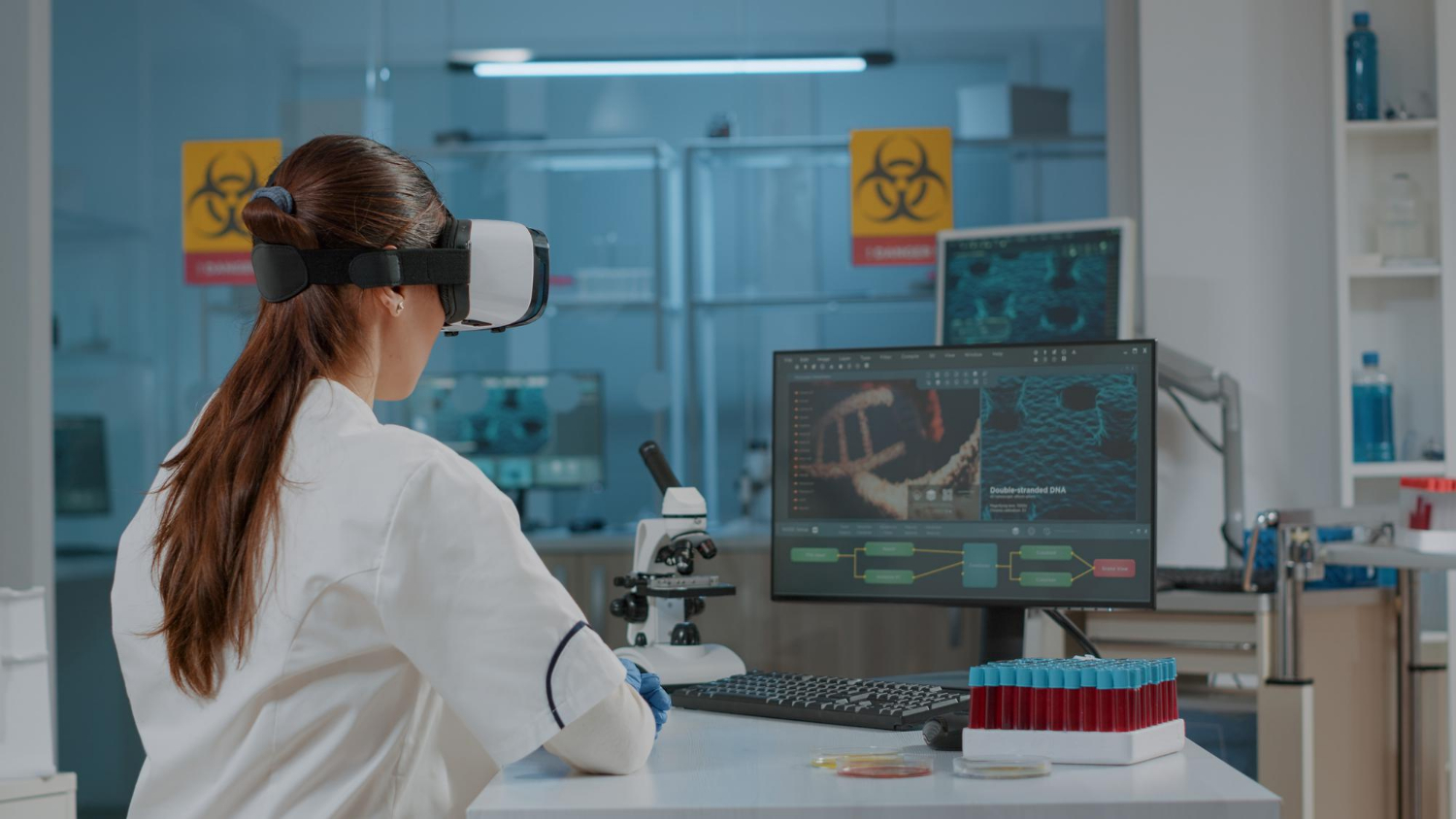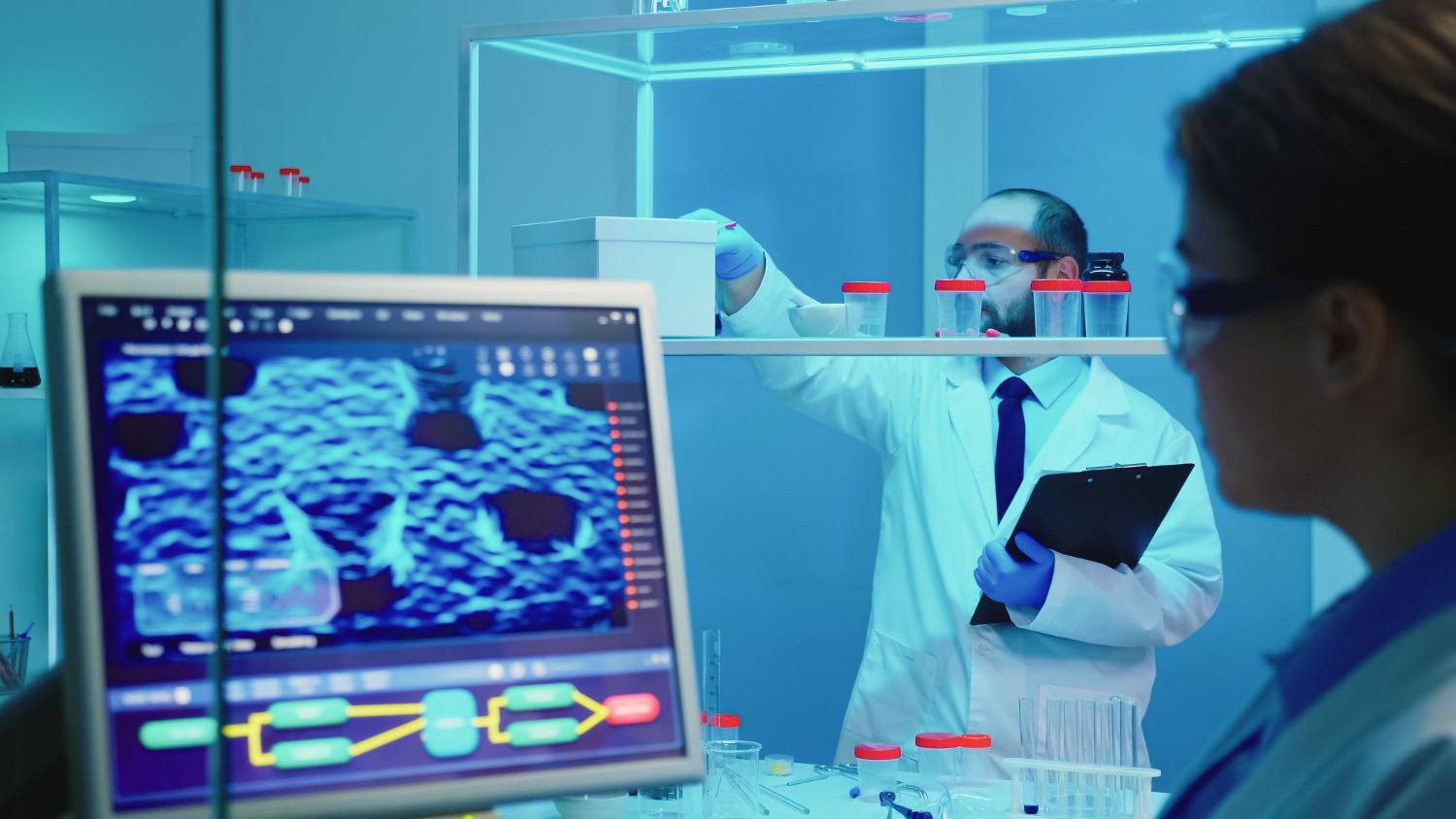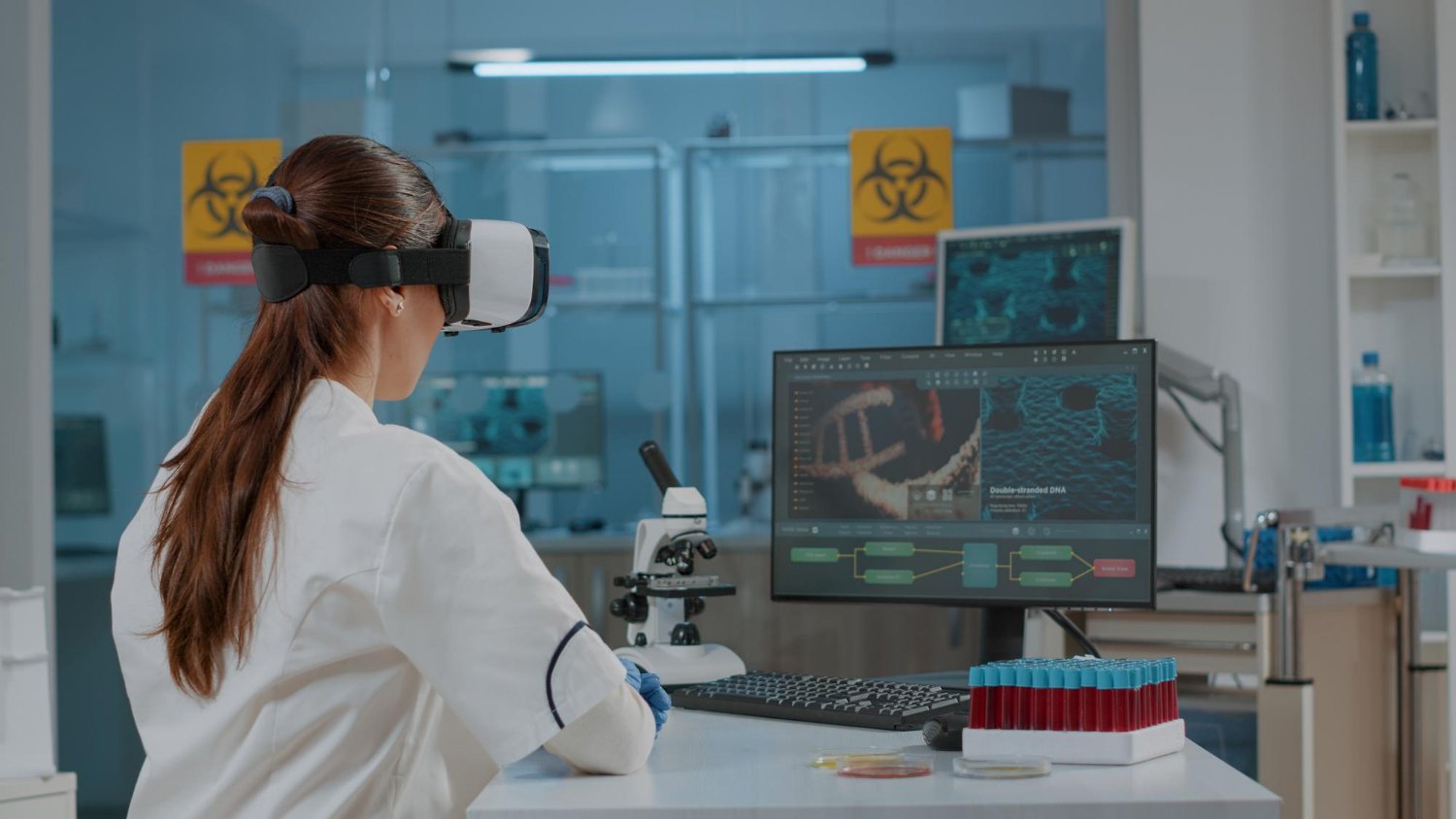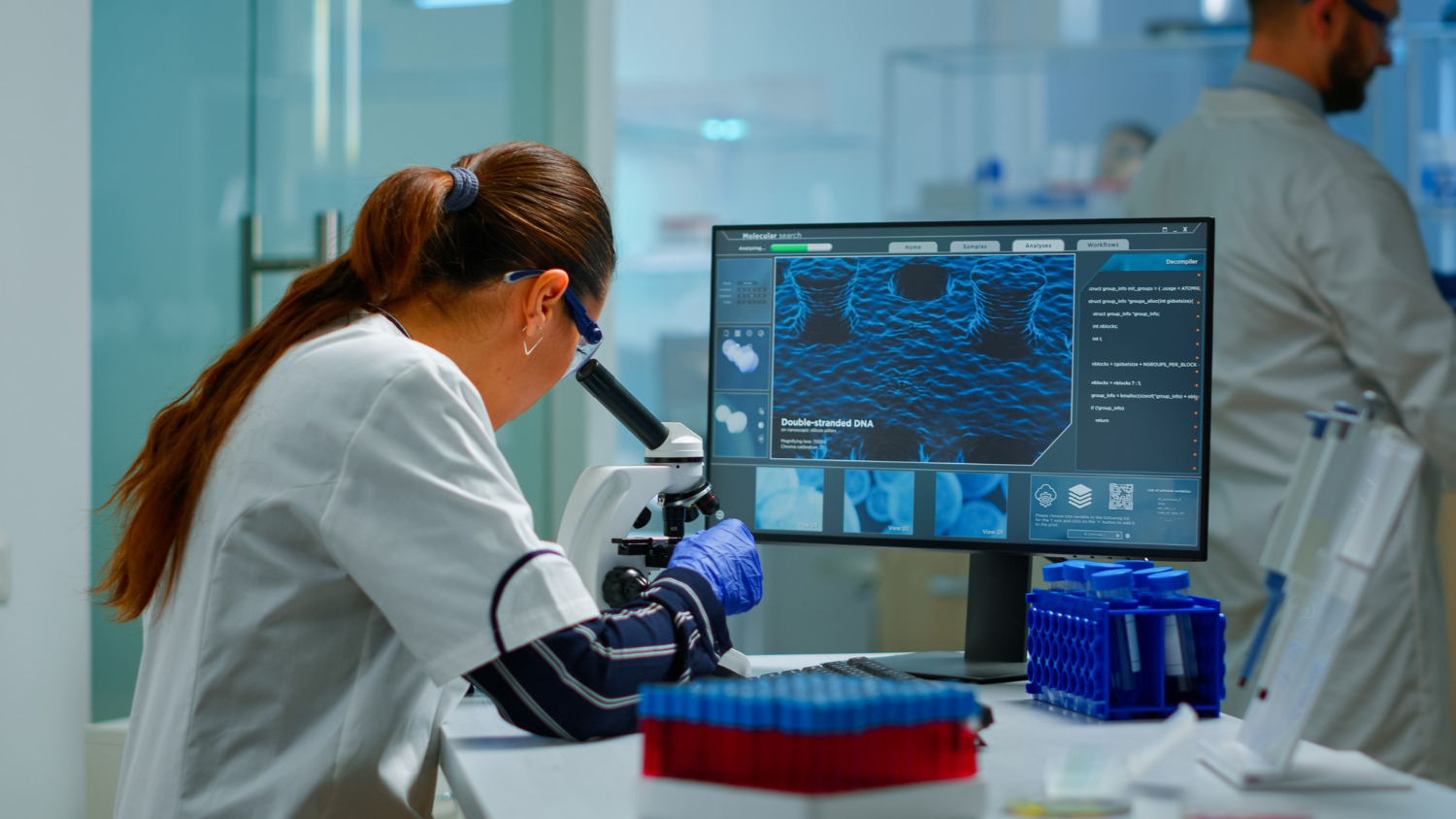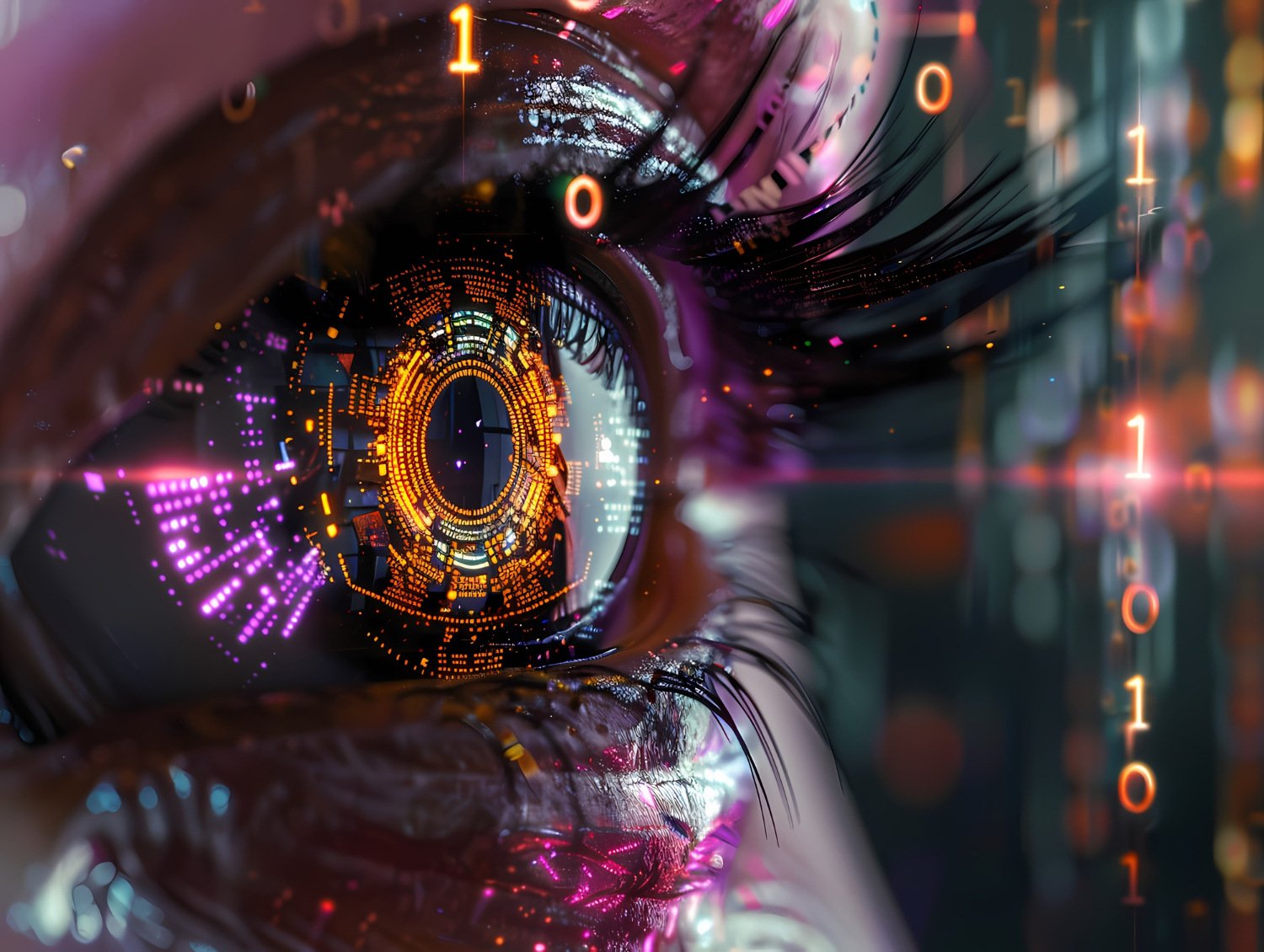The integration of natural language processing (NLP) and computer vision is revolutionising artificial intelligence (AI). Combining these two fields enables computers to process and understand both visual and textual information simultaneously. This fusion opens up new possibilities for AI applications in various industries. This article delves into the applications of NLP in computer vision, highlighting the benefits and potential of this integration.
Understanding NLP and Computer Vision
Natural Language Processing (NLP): NLP is a branch of artificial intelligence that focuses on the interaction between computers and humans through natural language. It involves the analysis and generation of written text, enabling machines to understand and respond to human language. NLP techniques include part of speech tagging, sentiment analysis, machine translation, and more.
Computer Vision: Computer vision is a field of computer science that enables computers to interpret and make decisions based on visual data. This includes recognising objects, understanding scenes, and extracting useful information from images and videos. Computer vision applications range from facial recognition to autonomous vehicles.
Applications of NLP in Computer Vision
-
Image Captioning: Combining NLP and computer vision allows for the automatic generation of textual descriptions for images. This application uses deep learning models to analyse the visual content and generate relevant captions. For example, social media platforms use image captioning to enhance accessibility and improve user engagement.
-
Visual Question Answering (VQA): VQA systems use NLP to understand questions posed by users and computer vision to analyse images. These systems can answer questions about the content of an image, such as identifying objects, colours, and actions. This application is beneficial in customer service, where automated systems can provide real-time responses to visual queries.
-
Scene Understanding: NLP models can enhance computer vision systems by providing context to visual data. For instance, in autonomous vehicles, NLP helps interpret traffic signs, road conditions, and driver instructions. This integration improves the accuracy and safety of driving systems.
-
Sentiment Analysis in Images: NLP techniques can be applied to analyse the sentiment expressed in images. This involves recognising facial expressions, body language, and contextual clues. For example, in marketing, sentiment analysis helps brands understand customer emotions and preferences, enabling targeted advertising.
-
Content Moderation: Combining NLP and computer vision enables automated content moderation on platforms with user-generated content. Systems can detect and filter inappropriate images and text in real-time, ensuring a safer online environment. This application is crucial for social media platforms, forums, and online communities.
-
Automated Video Transcription: NLP techniques can transcribe spoken language in videos, making them searchable and accessible. This application is useful in educational content, webinars, and conferences, where text transcripts can enhance understanding and accessibility.
-
Medical Imaging: In healthcare, combining NLP and computer vision improves the analysis of medical images. For example, NLP can help interpret radiology reports, while computer vision analyses the corresponding images. This integration aids in diagnosing and treating medical conditions more accurately.
Enhancing AI Capabilities with Deep Learning Models
Deep learning models play a significant role in integrating NLP and computer vision. These models use large amounts of training data to learn complex patterns and make accurate predictions. The use of deep neural networks, which mimic the human brain’s structure, enables the creation of advanced AI systems capable of performing a wide range of tasks.
-
Machine Translation: Deep learning models are used in machine translation to convert text from one language to another. When combined with computer vision, these models can translate text within images, such as signs and documents, in real-time.
-
Part of Speech Tagging: NLP models use part of speech tagging to identify the grammatical structure of sentences. This technique is essential in applications like image captioning and visual question answering, where understanding the context and structure of language is crucial.
-
Sentiment Analysis: Sentiment analysis uses deep learning models to determine the sentiment expressed in text or images. This application is widely used in customer service, where understanding customer emotions can improve interactions and satisfaction.
Overcoming Challenges with Unstructured Data
Integrating NLP and computer vision involves dealing with unstructured data, such as text and images, which lack a predefined format. Machine learning algorithms help process and analyse this data, enabling the development of AI systems that can interpret and respond to complex information.
-
Real-Time Data Processing: AI systems that combine NLP and computer vision can process data in real-time, providing immediate insights and responses. This capability is essential in applications like autonomous vehicles and real-time content moderation.
-
Analyzing Large Amounts of Data: The ability to analyse large amounts of data is crucial for developing accurate and reliable AI systems. Deep learning models trained on extensive datasets can identify patterns and make predictions with high precision.
Real-Life Examples of NLP and Computer Vision Integration
-
Google Lens: Google Lens uses computer vision to recognise objects, text, and scenes through a smartphone camera. NLP techniques enable the system to provide relevant information and context, such as translating text or identifying products.
-
Facebook’s Automatic Alt Text: Facebook uses AI to generate automatic alt text for images, improving accessibility for visually impaired users. The system combines computer vision to identify objects and scenes in images with NLP to generate descriptive text.
-
Amazon Rekognition: Amazon Rekognition is a service that uses computer vision to analyse images and videos. It can identify objects, people, and activities, and NLP techniques enhance its ability to provide context and insights. This service is used in various applications, including security and content moderation.
-
Autonomous Vehicles: Companies like Tesla and Waymo use a combination of NLP and computer vision to develop autonomous driving systems. These systems interpret visual data from cameras and sensors while processing driver instructions and traffic signs.
The Role of Computational Linguistics in AI
Computational linguistics, a field that combines computer science and linguistics, plays a crucial role in developing NLP models. It involves the study of language through computational methods, enabling the development of AI systems that understand and generate human language.
-
Developing NLP Techniques: Computational linguistics helps develop NLP techniques, such as part of speech tagging and sentiment analysis, which are essential for integrating NLP with computer vision. These techniques enable computers to process and understand natural language in various contexts.
-
Training Data for NLP Models: Training data is critical for developing accurate and reliable NLP models. Computational linguistics helps create and curate datasets used to train these models, ensuring they can interpret and respond to complex language patterns.
The Future of NLP and Computer Vision Integration
The integration of NLP and computer vision will continue to evolve, driving advancements in AI capabilities. As AI systems become more sophisticated, they will perform tasks that require understanding both visual and textual information with greater accuracy and efficiency.
-
Advancements in Deep Learning Models: Future advancements in deep learning models will enhance the integration of NLP and computer vision. These models will become more capable of learning from large amounts of data, improving their ability to interpret and generate content.
-
Improving Real-Time Applications: Real-time applications, such as autonomous vehicles and content moderation, will benefit from the continued integration of NLP and computer vision. AI systems will process and respond to data more quickly, providing immediate insights and actions.
-
Expanding Applications in Various Industries: The applications of NLP and computer vision will expand across various industries, including healthcare, customer service, and entertainment. AI systems will become more versatile, performing a wide range of tasks that require understanding both visual and textual information.
How TechnoLynx Can Help
At TechnoLynx, we specialise in developing advanced AI solutions that integrate NLP and computer vision. Our team of experts can help you leverage these technologies to enhance your business operations and improve customer experiences. We provide customised AI solutions tailored to your specific needs, ensuring that you benefit from the latest advancements in AI technology.
Whether you need automated content moderation, image captioning, or real-time data processing, TechnoLynx has the expertise to deliver reliable and efficient AI solutions. Our AI consulting services help you understand and implement the best AI strategies for your business, driving innovation and growth.
By partnering with TechnoLynx, you can stay ahead of the competition and take advantage of the latest AI technologies. We help you navigate the complexities of integrating NLP and computer vision, ensuring that you achieve optimal results.
In conclusion, the integration of natural language processing and computer vision is transforming AI capabilities, enabling computers to understand and respond to both visual and textual information. This fusion opens up new possibilities for AI applications across various industries, enhancing productivity and efficiency. With the continued advancement of deep learning models and computational linguistics, the future of NLP and computer vision integration looks promising.
TechnoLynx is committed to helping businesses harness the power of AI, providing cutting-edge solutions that drive success and innovation. Partner with us to unlock the full potential of NLP and computer vision in your business operations.
Image by Freepik





